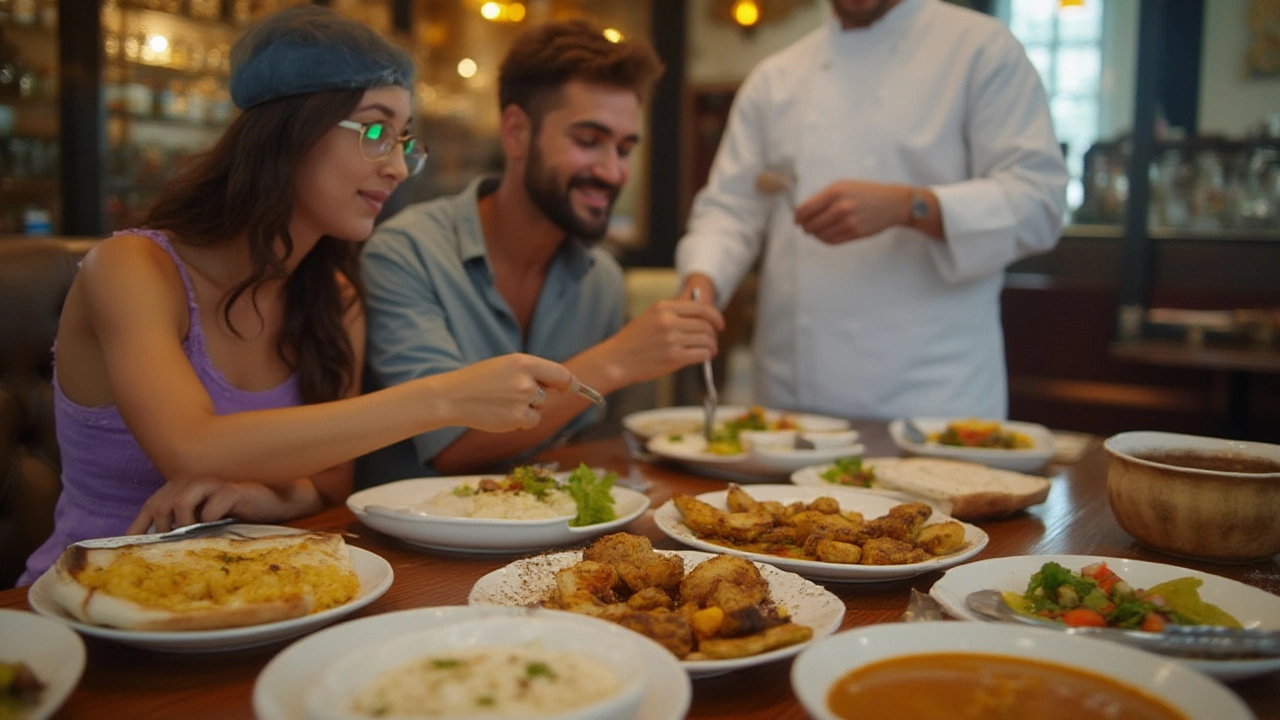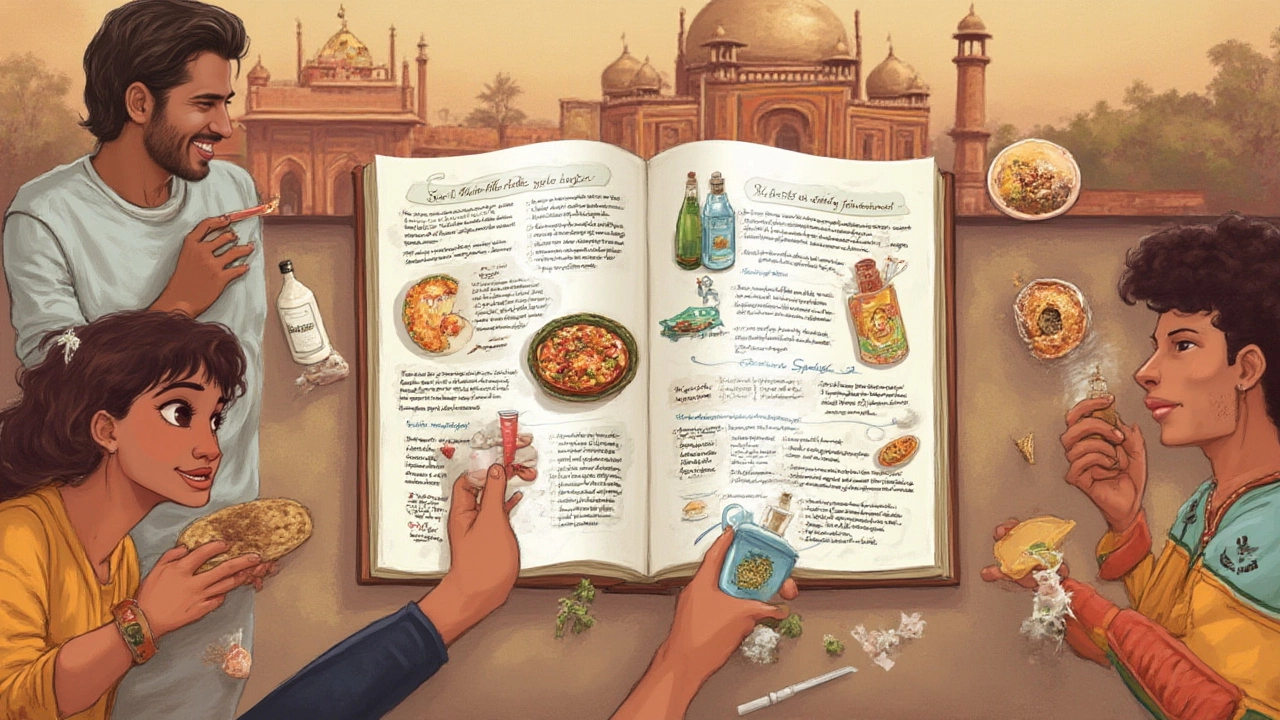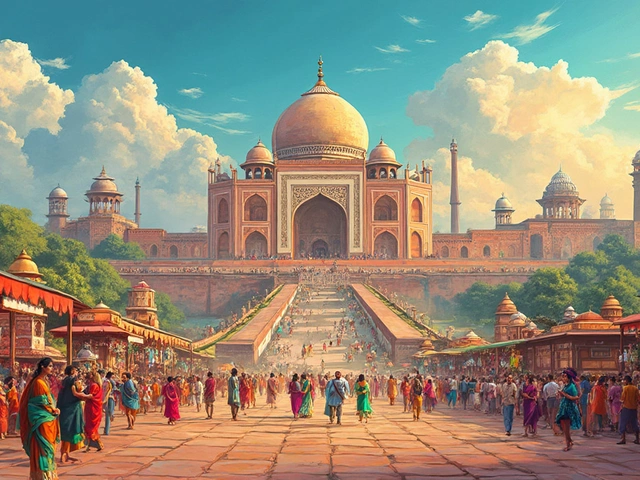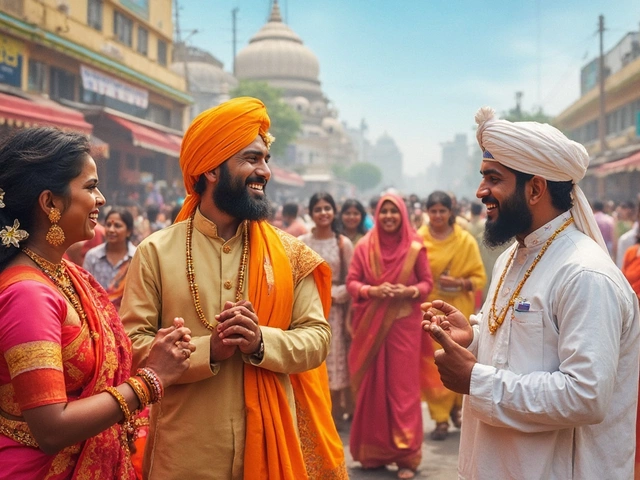Indian food tosses out more colors, flavors, and textures than a July Fourth parade—and the variety can be dizzying if you aren’t sure where to start. You’ve probably seen Instagram posts warning you about “Delhi belly” or stories of friends fearing spice levels rivaling the sun. Thing is, American travelers in India don’t have to spend their trip nibbling plain rice and clutching antacids. The challenge? Navigating which local foods will welcome your palate and stomach, and maybe even surprise you—as long as you know where to look and what to ask for. Believe me, I’ve been in those crowded Delhi markets, waving away the third “extra masala?” offer in as many minutes, and I’ve picked up more than a few tricks.
Understanding the Indian Food Scene: Myths, Truths, and What Stays on the Plate
Walk through a typical Indian market, and it’s easy to believe every plate is loaded with fiery chilies or mystery meats. But that’s far from the whole story. India is home to over 500 million vegetarians—about 39% of the population, according to a 2018 Pew Research Center analysis. That makes it the world’s largest vegetarian country, so there are endless meat-free meals that won’t shock delicate American stomachs. In fact, many restaurants across India—the big cities, tourist hubs, even small towns—will proudly label veg and non-veg choices, making it nearly impossible to get confused about what you’re eating.
If you’re the type to sweat at the mere thought of hot sauce, you’ll be glad to know that not all Indian food is spicy. There’s plenty of mild fare, especially if you stick to southern states like Kerala or Goan Catholic kitchens, which offer gentle coconut-rich stews. Or ask for “no masala,” and most places will gladly tone things down. For those with dietary needs—vegan, gluten-free, or dairy-free—options abound, and almost every menu will help guide you.
Let’s clear up another misconception: not every meal is street food. If Fiona were right here, she’d remind me of our argument in Jaipur over whether to buy samosas from a street cart. Eventually, we settled on a café—clean water, sparkling counters, smiles that weren’t rushing us along. Safety and hygiene standards at many urban restaurants are surprisingly high, especially in reputable chains, larger cafes, and five-star hotels. Just like you’d skip that dodgy hotdog stand back home, it pays to be choosy when deciding where to eat. Also, bottled water (always check the seal) and fresh-cooked food are your safest bets for avoiding tummy trouble.
Popular Dishes for Americans: Safe Bets and New Favorites
A lot of Americans visiting India start out cautiously before moving on to bolder bites. Here are some tried-and-true picks, plus a few surprises that tend to win even picky travelers over.
- Chicken Tikka Masala – Oddly enough, this creamy, tomato-based dish is more of an Anglo-Indian creation, but it’s everywhere, and often gentler on the heat. Scoop it up with naan or rice.
- Tandoori Chicken – Cooked in a clay oven, this is smoky, flavorful, and easy to love. It’s marinated in yogurt and mild spices. If you’re allergic to nuts, double-check the marinade just in case.
- Paneer Butter Masala – Cheese in India is like nothing you’ve had in the US. Paneer is mild, soft, and served in lush, rich sauces. Butter masala versions are crowd-pleasers with just a kiss of sweetness.
- South Indian Dosa – Basically a giant, crispy pancake made from rice and lentils. It’s usually stuffed with potatoes, served with coconut chutney and lentil soup (sambar). Naturally gluten-free, light for breakfast, and filling enough for dinner.
- Biryani – Every region has a twist, but this spiced rice dish, loaded with saffron, veggies, chicken or lamb, is a national obsession. Hyderabad and Kolkata do it best.
- Samosas – Deep-fried pastry triangles stuffed with potatoes or meat. Go for fresh, hot ones at busier cafes or restaurants with high turnover to avoid the “hours-old” risk.
- Dal (Lentil Soup) – A staple everywhere, dal comes in dozens of styles. It’s protein-packed, mild by default, and a safe pick for nervous bellies.
- Aloo Gobi – Potato and cauliflower, gently spiced. If you like comfort food, you’ll love this one.
- Raita – A yogurt-based side with cucumber or mint. It cools the palate, so always ask for a serving if you feel your plate is running hot.
If you just want something simple, most places can offer plain boiled rice, yogurt, fruit plates (preferably peeled), and even toast. Western chains like McDonald’s, Domino’s, and Starbucks pepper most major cities, albeit with quirky Indian-themed menus. That said, you didn’t come all this way for another Big Mac!
| Common Dish | Main Ingredients | Best For |
|---|---|---|
| Dosa | Rice, lentils, potatoes | Breakfast, gluten-free |
| Paneer Butter Masala | Paneer cheese, butter, tomato, spices | Protein-rich vegetarian meals |
| Tandoori Chicken | Chicken, yogurt, mild spices | Meat-eaters and low spice |
| Dal | Lentils, spices, sometimes cream | Protein source, mild, filling |
| Thali | Rice, breads, veggies, curries, dessert | Sampling new flavors |

Street Food and Food Safety: To Try or Not to Try?
Indian street food is legendary—your taste buds might crave it even as your brain runs risk analysis. The smells of sizzling pakoras and spicy chaat drift through the air, whether you’re in Chennai or Chandigarh. Truth is, you absolutely can try street snacks, as long as you use the same sense you would anywhere. Follow the “see, smell, and join the queue” rule: eat where locals flock and where the turnover is clearly high.
Stick to stalls where the food comes straight off the grill or out of hot oil, not stuff that’s been sitting around. In my travels, I avoid fresh juices with ice or raw veggies unless you see them peeled before your eyes—water contamination is a top culprit for stomach woes here. Instead, opt for roasted corn (bhutta), piping-hot samosas, or jalebis made in front of you. Mango lassi, a yogurt-based fruit drink, is a safe bet if the yogurt is freshly churned or pasteurized (most reputable stands and cafes use safe milk these days).
Choose cooked items over anything uncooked, and don’t hesitate to ask how a dish is made—even if you sound like a cautious tourist. Most vendors love sharing their process, and a little friendliness goes a long way. Watch out for fancy sauces and chutneys left uncovered; ideally, skip anything you haven’t seen boiled, fried, or roasted. And don’t get embarrassed about carrying bottled water everywhere—I once lugged around two liters during a Chennai heatwave, and never once regretted staying hydrated.
If you want a taste test but worry about consequences, try street food “safaris” led by local guides. They steer you to the best stalls, know what’s fresh, and can explain ingredients you’d never guess (or pronounce). In recent years, food safety standards have gotten stricter in major cities. According to the FSSAI (Food Safety and Standards Authority of India), over 40,000 food businesses are now registered, with many street vendors trained in basic hygiene. Still, your best meal is the one that tastes great and lets you keep exploring the next day.
Eating with Restrictions: Vegan, Gluten-Free, and the “No Spicy” Club
If you worry Indian food is all wheat, all dairy, or just a parade of butter, you’re in for a happy surprise. India’s ancient food landscape is naturally suited for food allergies, vegan lifestyles, and anyone carefully counting carbs. Most dishes in southern India, for instance, are built on rice, lentils, and coconut rather than wheat, so gluten-free travelers are spoiled for options. Dosa, idli, uttapam, and pongal are all wheat-free and filling. Punjab and Gujarat offer plenty of vegetarian food—just check if there’s added ghee (clarified butter) or paneer if you’re avoiding dairy.
Vegan travelers can usually rely on potato curries (aloo sabji), chickpea dishes (chana masala), and spicy lentils with rice. Just remember that ghee is the default cooking fat in northern India, so always specify if you want your meal cooked with oil (“no ghee, please!”). Non-dairy milks have become popular in coffee shops in Goa, Mumbai, and Bangalore—so “soy latte” won’t earn blank stares.
If spicy food is your anxiety, breathe easy. Many restaurants cater to foreigners and families by offering “less spicy” versions of popular dishes. In most cases, the heat level comes from chilies added right at the end—just say “no chili” and the kitchen usually obliges. Fiona once dared a chef in Kerala to make a vindaloo that wouldn’t “hurt tomorrow,” and the resulting stew was hearty, tangy, but perfectly gentle.
People with nut allergies need to be vigilant, as ground cashews and almonds appear in some rich gravies, sweets, and snacks. When in doubt, ask in advance—most servers know exactly what’s in the food and will check if you’re unclear. Restaurants in Goa, Kerala, and Mumbai are especially familiar with Western tastes and dietary restrictions, sometimes even providing menus translated into English with allergy warnings.
- Use Google Translate for key allergy phrases, or download a local language card (Hindi, Tamil, Bengali, etc).
- Learn the local word for your allergy—"badam" is almond, "kaju" is cashew, so you know what to avoid.
- Stick to busy, reputable joints where you can see the kitchen and ask questions.
- When eating at someone’s home, don’t be shy about mentioning allergies or preferences—Indian hospitality means you’re always accommodated.

Dining Etiquette, Hidden Gems, and Mixing It Up
Eating in India is as much about how as what. Before you go, learn the basics: most traditional meals are eaten by hand, just with your right hand (the left is considered unclean for eating). Don’t worry—every restaurant offers cutlery! But if you’re game, try rolling your naan or rice into a bite and scooping up curry. Locals will admire your effort. Remember to wash up before and after—it’s part of the experience.
Buffet-style “thali” meals are a must for first-timers. For a set price, you get a round silver tray with a little of everything—rice, breads, curries, chutneys, dessert. It’s perfect for sampling lots of dishes without pressure. There are even “continental thalis” for anyone still easing in.
Breakfast is a real treat, too—start the day like locals with poha (flattened rice), upma (savory semolina porridge), or a spicy omelet sandwich bought fresh from a bakery. Coffee drinkers should try South Indian filter coffee, served sweet with frothy milk. Tea fans, order “chai,” but be ready for bold, sweet, milky brews with a touch of spice.
- Drink only bottled water, and skip ice unless you’re sure it’s from purified water.
- Fruit juices are safest when fresh and made before your eyes.
- Carry hand sanitizer for meals on the go.
- Avoid buffets in hot weather unless the food is clearly fresh and steaming hot.
Outside the restaurant scene, food delivery apps (like Zomato or Swiggy) make it easy to order hot, tasty meals in major cities without language hurdles or crowds. Loads of popular chains—like Saravana Bhavan for vegetarian South Indian fare—are safe, affordable, and reliably clean.
If you want a real adventure, try joining a “home kitchen” experience, where you eat in a local’s house and learn to cook basics like chapati or dal fry. These pop up in cities with strong tourism scenes and are usually listed on Airbnb Experiences. No travel guidebook replaces a meal shared around someone’s family table—and you’ll take home a recipe you can try back in the States.





